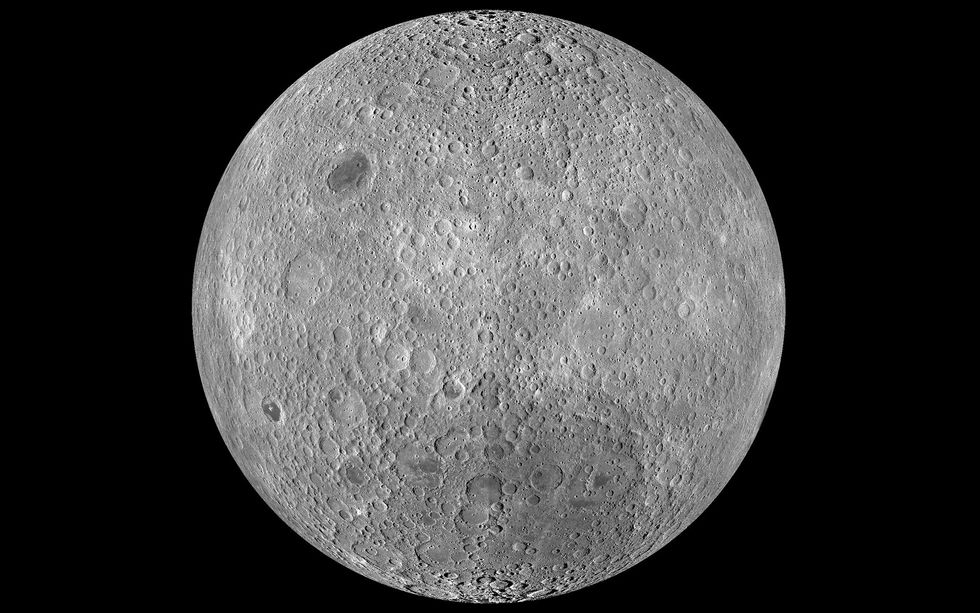China launched a spacecraft today that is planned to be the first act in a complex, multi-step campaign to achieve an unprecedented feat: Collecting samples from the far side of the moon and delivering the precious cargo to Earth.
Queqiao-2 (“Magpie Bridge-2”), a communications relay satellite, launched at 8:31 a.m. local time on a Long March 8 rocket from the Wenchang Space Launch Site in Hainan province. If all goes well, its stable and highly-elliptical lunar orbit will see Queqiao-2 spend vast portions of its 24-hour-period orbit out beyond the moon, able to view both the far side of the moon and the Earth. From here it will assist a series of landing, sampling and lunar ascent maneuvers needed to sample the lunar far side, which never faces the Earth, thanks to our planet’s gravity tidally locking with the moon’s rotation as it orbits Earth once every 27.3 days.
“Landing is always the hardest, because everything is so time-critical, you can’t just pause halfway through and try again later.” —Jonathan McDowell, Harvard-Smithsonian Center for Astrophysics
With Queqiao-2 in place, the Chang’e-6 mission—a stack of four spacecraft—is scheduled to launch in May. It will target a landing in Apollo crater on the far side of the moon to both scoop up drill for up to 2,000 grams of rock samples.
Chang’e-6 will launch on a larger Long March 5 rocket which arrived at the Wenchang spaceport on 15 March. After launch and separation from the rocket, according to a paper from 2021 authored by engineers from the Beijing Institute of Control Engineering, the mission’s service module will control the course of its five-day-journey to the moon, then fire its engines precisely to enter a polar lunar orbit. The lander will separate and prepare for its touchdown attempt.
(The 2021 paper above concerns China’s previous moon sample mission, Chang’e-5 in 2020. However, the Chang’e-6 spacecraft are identical to Chang’e-5, and the often inscrutable China National Space Administration, CNSA, has indicated substantial similarities between the two missions in both public presentations and public remarks by prominent engineers. So, lacking a more definitive authority, the Chang’e-5 mission plan will be treated as providing sufficient indications of the course of Chang’e-6’s upcoming mission.)
“Landing is always the hardest, because everything is so time-critical, you can’t just pause halfway through and try again later,” says Jonathan McDowell, a Harvard-Smithsonian astronomer and a space activity tracker and analyst.
As has recently been seen with landers from Japan (SLIM), which landed on its nose, and Intuitive Machines’ IM-1, which toppled on its side, even apparent successful landings can be rough.
The Chang’e-4 soft-landed on the far side of the moon on January 3, 2019 and was later captured in this photo taken by the rover Yutu-2 (Jade Rabbit-2) on 11 Jan. 2019. Xinhua/Getty Images
China has however landed on the far side with Chang’e-4 and performed a near-side moon rock sampling with Chang’e-5 in 2020. The Chang’e-6 lander and ascent module—initially made as backups in case Chang’e-5 failed—will likewise descend onto the surface in phases, according to the mission paper noted above. After an initial deceleration at 15 kilometers above the surface, the lander will reorient itself to a vertical position when two kilometers up. The lander will then use lidar—light detection and ranging—and optical cameras to guide it through a coarse hazard avoidance phase and, starting at around 100 meters altitude, a hovering, fine hazard avoidance phase to a safe landing spot.
Launching into orbit from another planetary body is a rare and challenging event, with only the Soviet Union’s Luna program, the Apollo missions and Chang’e-5 having performed this before.
The lander is also equipped with laser altimeter and velocimeter, and a throttleable engine to provide adjustable thrust for the powered descent. It also utilizes a reconfigurable attitude control system based on quaternion partition control to help estimate and compensate for disturbances from the spacecraft’s propellant sloshing around.
On the surface, the lander will, like Chang’e-5, quickly get to collecting samples, with activities likely to be wrapped up within a couple of days, according to designers of the previous mission. These are loaded into the ascent vehicle sitting atop the lander. The ascent vehicle will lift off around a couple of days after landing.
“The next hardest bit is the rendezvous,” says McDowell, noting the process should be similar to Chang’e-5, although this time supported by Queqiao-2.
Launching into orbit from another planetary body is a rare and challenging event, with only the Soviet Union’s Luna program, the Apollo missions and Chang’e-5 having performed this, with only the latter two having performed a lunar orbit rendezvous as well. According to the 2021 mission paper, the ascent vehicle will be guided by a central control unit, a sun sensor and a star tracker. It is expected to enter a carefully-planned circular lunar orbit. Both the ascent vehicle and waiting service module will begin phasing maneuvers needed to rendezvous and dock, made possible by inertial measurement units, radar and optical navigation, docking ports, capture mechanisms and software algorithms, again using Chang’e-5’s mission profile as guide.
The samples will be transferred to a reentry module aboard the service module, which will then prepare for the trip back to Earth. The reentry module will be released just prior to reaching Earth. The capsule, protected by ablative shielding, will perform a ballistic skip reentry, as performed during Chang’e-5, first bouncing off the atmosphere to kill some of the extra speed involved in lunar missions, before making a final, fiery plunge.
The mission will take 53 days from launch to landing in Inner Mongolia. As to why this complex celestial performance is being orchestrated, Yuqi Qian, a postdoctoral fellow at the University of Hong Kong, says that the samples could contain material ejected from the lunar mantle, providing unprecedented insights into why the moon’s near and far sides are so different and the history of the Earth-moon system itself.
“They may largely reshape humanity’s current understanding of the lunar early evolution from a never-sampled site,” Qian says.





